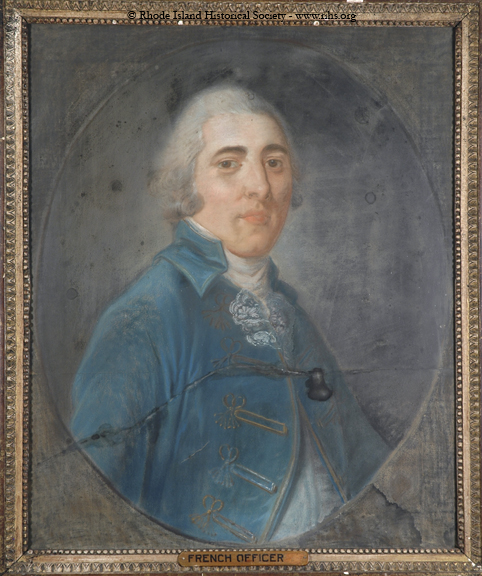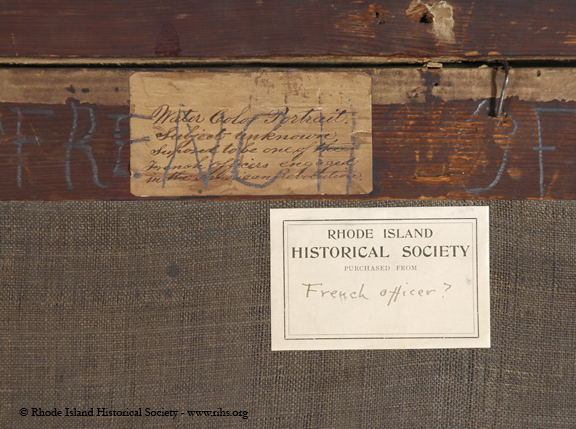
Found, when looking for something else: A French Officer, watercolor on paper given to the RIHS in 1895. Some of the best behind-the-scenes finds are those you’re not expecting, and this officer was one of those exciting moments of discovery. The label on the back says only “Watercolor portrait/Subject unknown/Supposed to be one of the/ French officers engaged/in the American Revolution,” but we know this was given to the RIHS in 1895, by John A. Howland, a long-time and active member of the Society.

Perhaps he was a member of the Regiment of Saintonge, whose second-in-command, the twenty-four-year-old Armand Charles Augustin, kept a diary of his time in Newport that is now in the National Archives in Paris. Augustin recorded his relief at sighting and on strolling on Conanicut Island. The French officers in Newport enjoyed dances and teas with the ladies of the town, the troops dug earthworks (redoubts), examples of which can still be found in Tiverton and Jamestown.
It was long ago, and seems far away, but in the proud face of this man who gazes at us across time, we’re closer to the past and to the moment when he came to Rhode Island and helped create the world we live in today.
You can find out more about the French in Newport, and in Rhode Island, in Rhode Island History, Volume 11 No. 3, pp.73-81, among other articles. ~KNH
